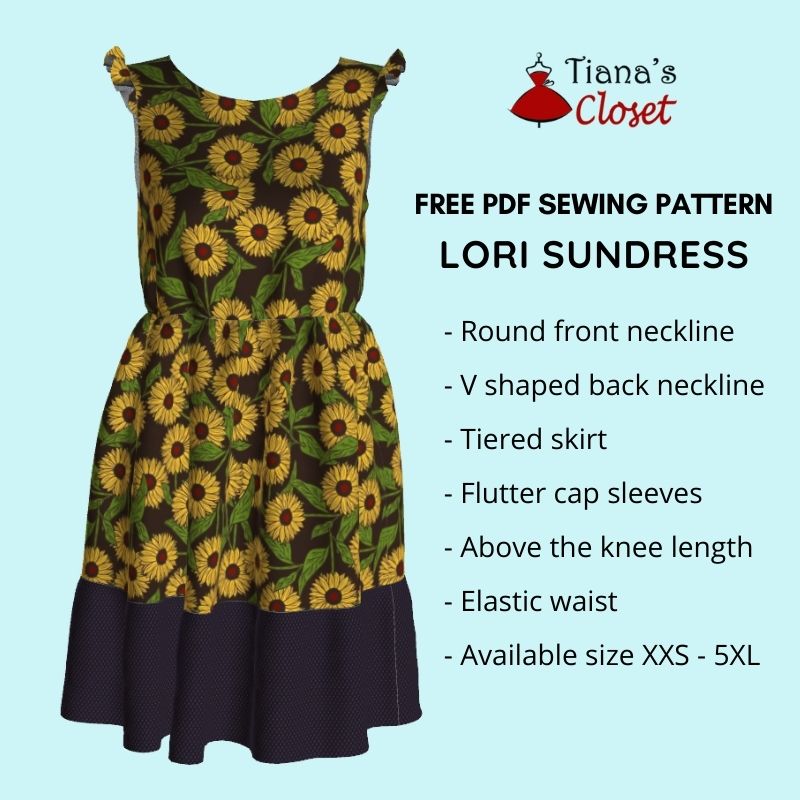DOWNLOAD LINK AT THE END OF THE POST
The weather is getting warmer every day, and I am excited to change from layers of clothing to just one (or two) lighter pieces. To celebrate the sun (and hours of gardening), I am bringing to you the Lori sundress.
This dress features a loose fitting tiered design, with flutter sleeve detail. It falls just right above the knee (and if you don’t want it to be short, just lengthen the lower tier, you can even get a maxi dress just by doing so!) It is youthful and flirty, and can be a good option for those who want to literally live in their garment.
The best thing about it is that you do not have to sew zippers (lol). Just like any other amateur sewists (you know I am more trained to be a patternmaker), I dread invisible zippers, so I you will see lots of design that does not require the skill of sewing zippers. My dream is to make myself a whole no-zipper wardrobe!
If you are wondering how this design can go with different colors and print, look at it in 3D simulation:
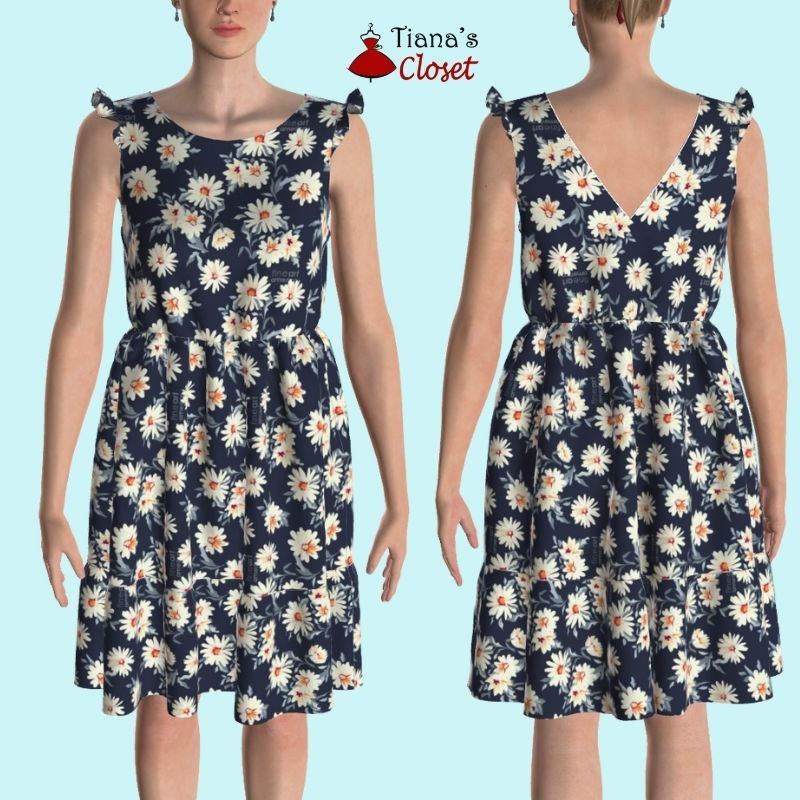
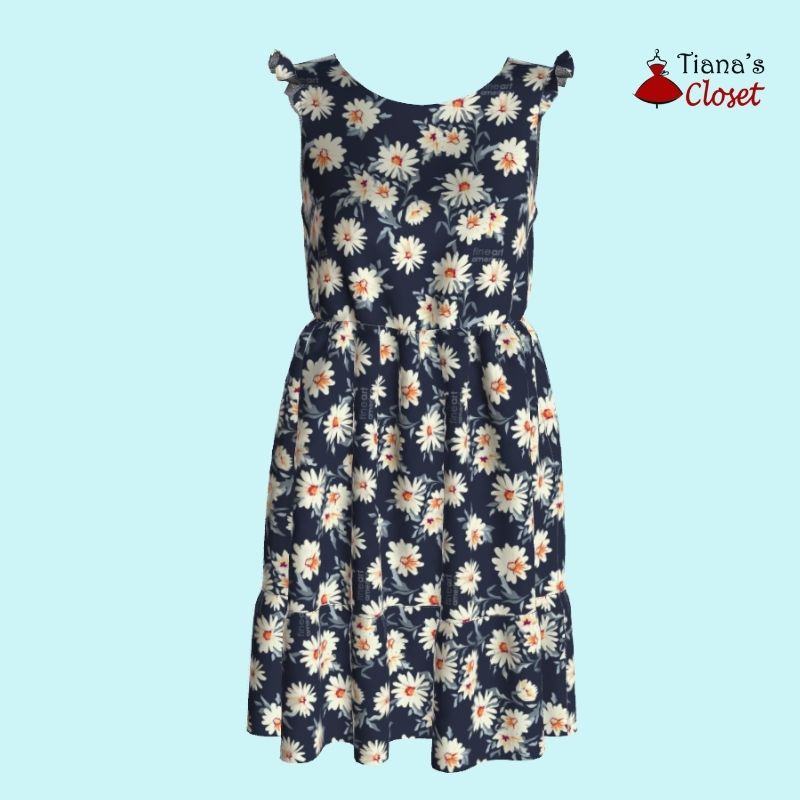
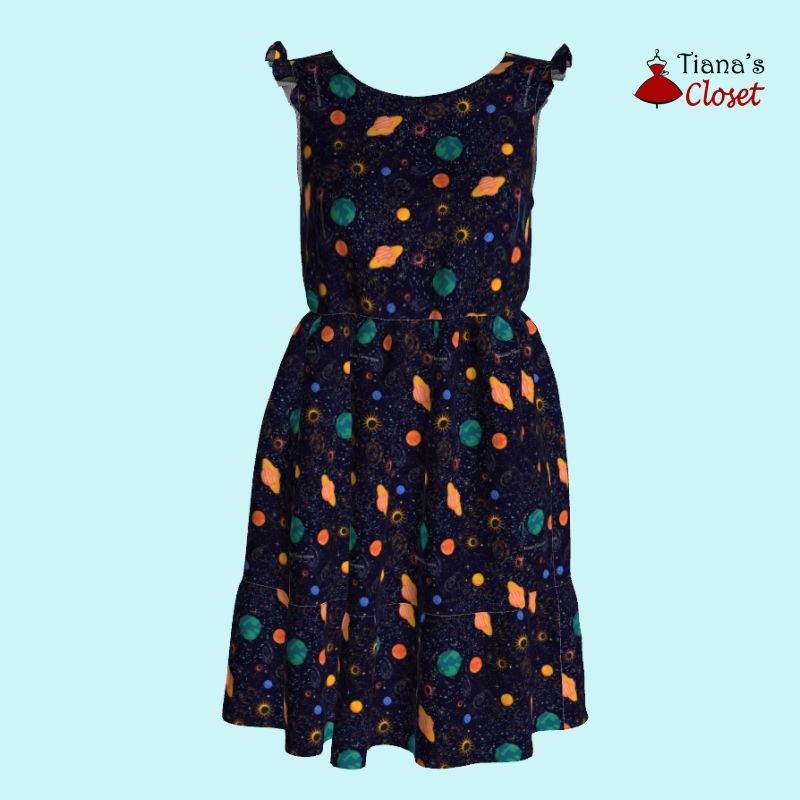
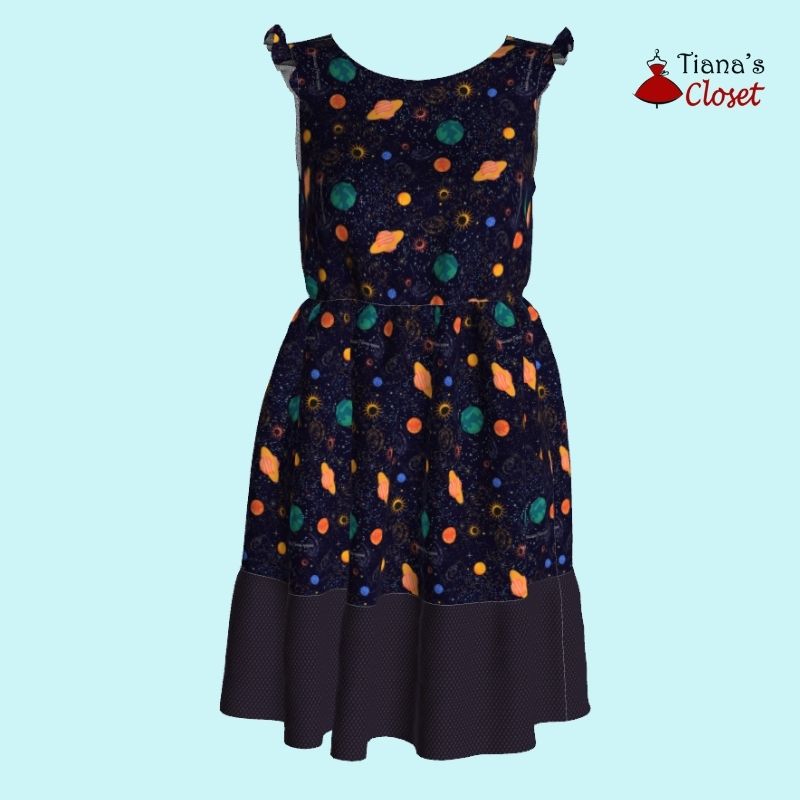
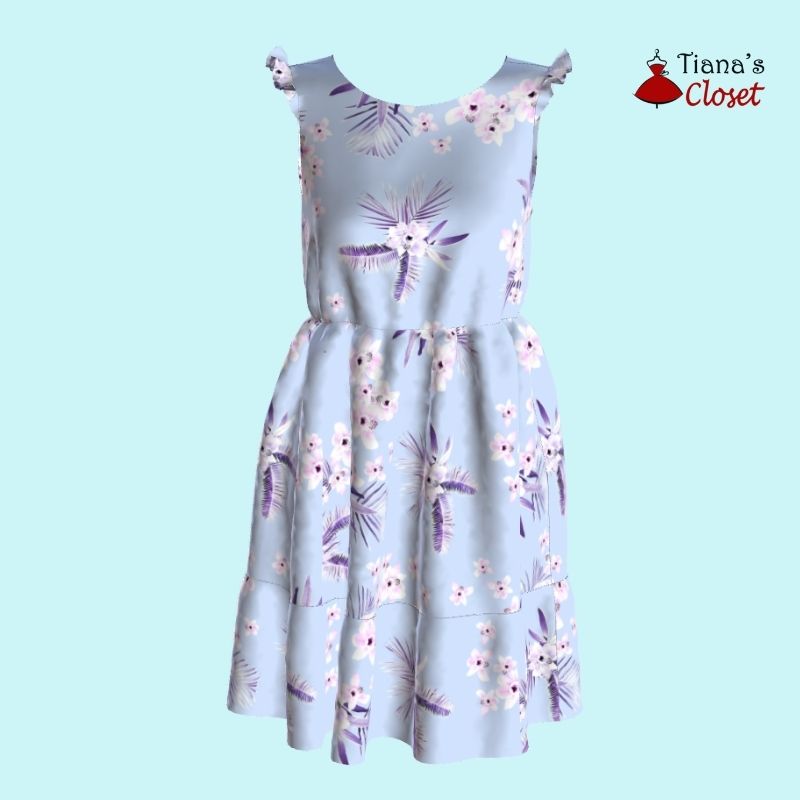

As usual, my pattern is made in 10 sizes from XXS to 5XL, so you will find yourself a suitable size. You can also lengthen or shorten the hemline to get your desired length – you can even make a maxi dress from this pattern.
The pattern is made using layered PDF, please check for your desired size before printing so you won’t waste your paper. I have included a first page with many details about sizing and printing, so please first read the first page and make sure you know what size you need! If you still do not know how to print a layered PDF, please check for the printing instruction in this post: PRINTING GUIDE.
You can print this using your home printer and A4/Letter paper. I calculated the printing area so that you will be able to use either type of paper to print the pattern out perfectly. Always print the first page first and check with the test square if you are printing at the right scale before you print out the whole pattern – avoid waste of ink and waste of paper, save the earth!
Some PC may print smaller than actual size even when you choose 100% scale – I don’t know why this problem exist, but my HP laptop cannot print true to size. I have to scale up to 103% to get the right size. You may need to check with your PC to see if it prints true to size, if not, scale up a bit.
SEWING INSTRUCTION
You will need
- Fabric of your choice
- Some bias binding tape for the neckline and armholes
- Some 1/2 inch elastic
- Scissors, pencil or fabric marker, ruler, pins
- Sewing machine or needle and thread
- Printed pattern
What fabric can be used for this project? This design is made for woven fabric. It works best with thin, flowy fabric because it will not be bulky at the gatherings.
How much fabric do you need for this piece of garment? To be precise, you may need to check how much fabric you need before buying. It will depend on the selected pattern size, the width, and design of the fabric you plan to use. Just to be sure, print all the paper patterns and lay them out at the width of fabric you plan to use (usually from 90 to 150 centimeters or 35 to 60 inches). Measure how much fabric you will need. Don’t forget to account for pieces that need to be cut multiple times and pieces that are cut on the fold.
Cutting instruction:
After printing out and taping all the pattern pages together, you will get something similar to this image:
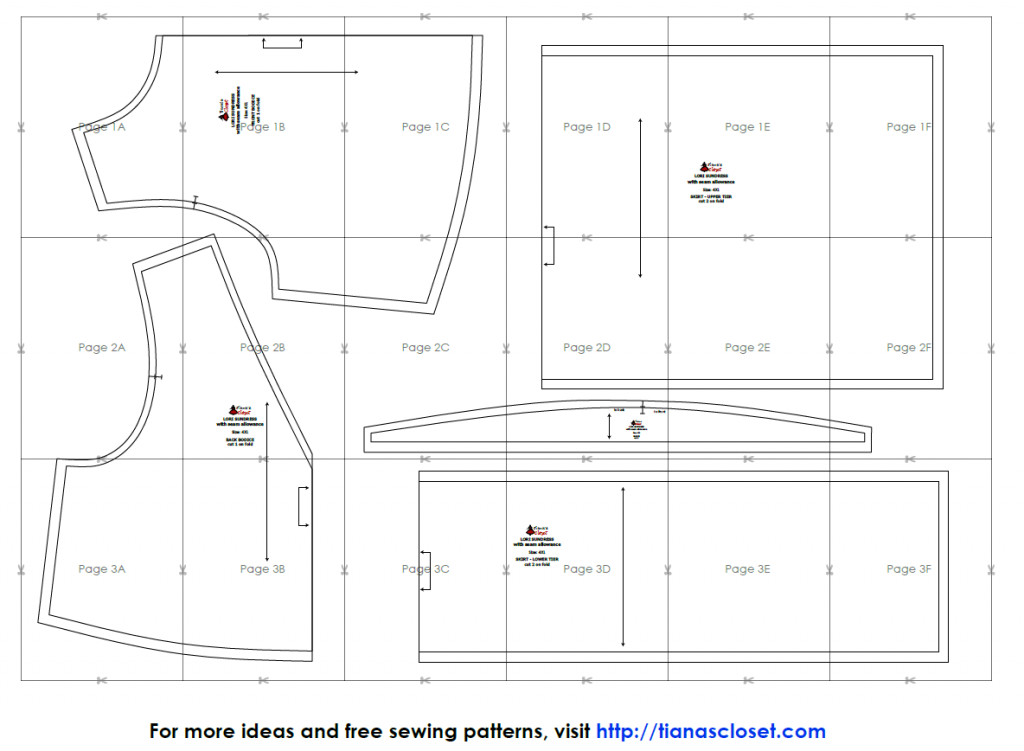
You will see that there are 2 sets of lines on each pattern size. The inner lines are sewing line (and you sew along these lines), and the outer lines are cutting lines (you cut the fabric along these lines, remember the folding lines where you have to fold the fabric before cutting). The distance between sewing line and cutting line is seam allowance, and it varies from point to point. For example, the side seam allowance is about 1/2 inch (1.2cm), and seam allowance at hemline is 1 inch (2.5cm). This is the reason why I do not remove the sewing lines from the pattern. Please use it as a guide to know how much seam allowance you need to give at each seam.
Fabric will be cut into following pieces:
- Front Bodice: cut 1 piece on the fold
- Back Bodice: cut 1 piece on the fold
- Sleeve: cut 2 pieces
- Skirt – Upper Tier: cut 2 pieces on the fold
- Skirt – Lower Tier: cut 2 pieces on the fold
- Bias binding tape – you will adjust the length of the tape when you sew
Make sure to mark all notches and other design features such as darts, pleats etc. from the pattern pieces onto your fabric. When sewing the garment, pay attention to notches, they must match up.
Sewing instruction:
1. Serge the fabric to prevent the sides from unraveling.
2. Sew two parallel lines ¼ and ½ inch from the top edge of the Skirt – Lower Tier using the longest stitch length. Pull the lower threads to gather the fabric so that it matches the width of the Skirt – Upper Tier. Distribute the gatherings as evenly as you can.
3. Place the gathered Lower Skirt Tier and the Upper Skirt Tier right side facing. Pin and sew to join two pieces together. Repeat with the other pair of skirt tiers.
4. Use the same method to gather the top edge of the Upper Skirt Tier and join it to the Front Dress Bodice. You get the Front Dress. Repeat to get the Back Dress.
5. Place Front Dress and Back Dress right side facing, matching all the joints of tiers. Pin and sew the shoulder and side seams.
Cut a piece of elastic (the length should be your waist measurement minus 4 inch/10 centimeters), join the two ends. Place it along the seam between the Dress Bodice and the Skirt and sew (pull the elastic when you sew). You can leave this step if you like a truly loose fitting dress.
6. Use a rolled mini hem to finish the hem of the sleeves. Gather the sleeve caps.
7. Place the Sleeve and the armhole of the garment right side facing, matching the notches. The sleeve will go from one notch to another, leaving the rest of the armhole unfinished. Pin and sew to join the sleeve to the main garment.
8. Finish the neckline and the unsewn part of the armholes with bias tape bindings.
9. Hem the dress. Give it a good iron and you’re done!
And here is the download link:
Happy sewing! And don’t forget to share your project on my Facebook page: Tiana’s Closet Sewing Patterns
Tiana

